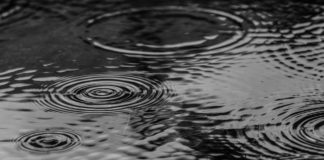“I’ve been groomed to do this, like it’s my right livelihood. I see the big picture of connecting people to the land, both culturally and naturally,” said Daniel Williford, state interpreter for Henry Cowell Redwoods State Park, as we rambled alongside the San Lorenzo River.
We were scouting our trail for the last nature walk of the year, which was sponsored by an environmental education grant from the San Lorenzo Valley Water District.
“I could say that nature feeds our souls,” Williford continued. “But our language can’t help to describe it. It’s a feeling.”
Perhaps describing the feeling would be as daunting as asking a child to describe her love for her mother.
The fall equinox is Saturday, Sept. 22, when the sun begins to hang lower in the sky and drops behind the mountains sooner. But before the winter monsoons arrive, Indian summer will provide a lightshow of colors for deciduous trees, like the sycamore, big leaf maple, and cottonwood.
Williford and I share a secret: Even though we love our indomitable redwoods, the sycamore is our favorite native tree, with its glittering, golden leaves and gray and cream peeling bark. He describes the bark as looking like “ghosts or bones,” and it was called the “ghost tree” by the First People.
I think of the tree as a woman spirit, like a heroine in a Richard Wagner opera — a force of heaven and hell, strength and beauty.
In the Cowell groves, you can see sycamores offering protection for a shimmer of hummingbirds looking for home sites in their branches and gathering the soft fuzz on the undersides of the leaves to construct their storm-worthy, walnut-sized nests.
If the wind does break off a branch, the hole becomes a new home for an owl or woodpecker. Nature works.
In the massive flood of 1982, the sycamores at Cowell stood in 8 feet of river water, but their extensive surface roots hung solid in the sandy soil and helped stabilize the San Lorenzo riparian corridor. The trees were not blown out to sea.
Like the madrone, the sycamore contorts into fantastical shapes to find sun in a forest of redwoods. Strong, thick branches allow it to bend to a 90-degree angle and sometimes measure longer than the height of the tree itself.
Robert Frost wrote about his New England trees in “Birches”:
“When I see birches bend to left and right
“Across the lines of straighter darker trees,
“I like to think some boy’s been swinging them.”
Boys could not bend the sycamore, but I bet the branches could make for a good climbing tree and hideout.
This year, Dave Kuty, a board member of the Mountain Parks Foundation at Cowell, worked with a high school student, Zane Moore, from San Mateo, who had an obsession with finding the tallest trees. Kuty has been a docent for 12 years; he walks the trails and knows the trees.
“If you can see the top and bottom of a tree, you can measure the tree directly, but in a forest, you usually can’t see the top and the base,” Kuty said.
Using special equipment, Moore was able to project a line onto a tree and measure from that line to the base. That’s how he found the tallest western sycamore in the world, living on Corralitos Creek in South County between two redwood trees, which protect it from the wind. The tree is 178 feet tall.
“Cowell has the largest grove of sycamores in the world,” Dave said. “And on a list of the 20 tallest sycamores, we have 12.”
Another riverbank dweller is the red alder, a large but lesser-known tree in Cowell that also reduces bank erosion, protects water quality and adds nitrogen to the soil with its deep leaf litter. As I look up into its lofty limbs, I can imagine how women of Pacific coast tribes sat below the tree, peeling through the many layers of bark, revealing colors of red, cinnamon, orange, yellow and brown.
This massive hardwood would provide dyes they used to color baskets, moccasins and other treasures. What did the patterns and colors they chose symbolize to them, and how does nature reveal itself to us?
If you would like to join us for the free nature walk on Sept. 29, please email me for more information.
– Carol Carson, a naturalist, writer and educator, can be contacted at ca****@*********on.com.












